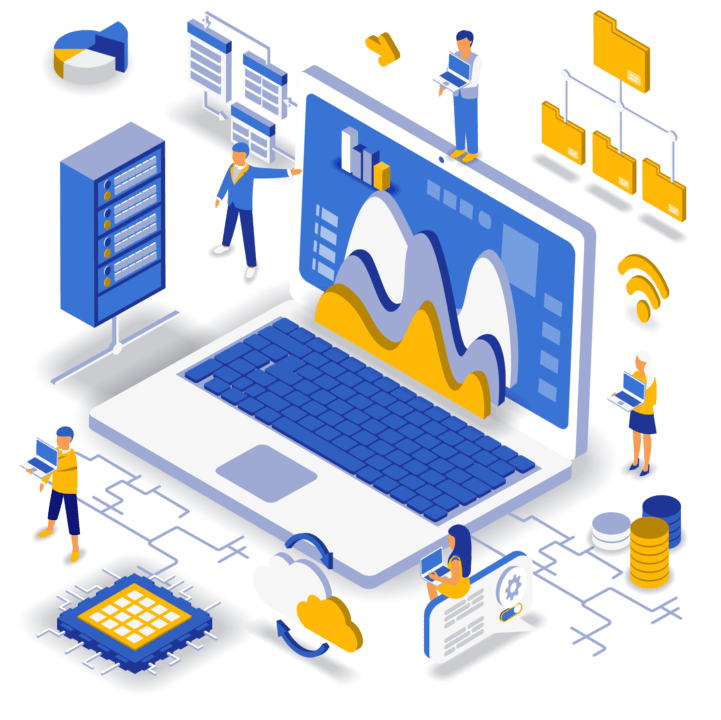2019 ERP Trends
2019 ERP trends and digital transformation strategies can take many shapes. However, an ERP solution may exist as the most powerful tool to empower businesses. These systems unify people, processes, and resources within a single environment, more importantly, one that provides a single source of truth (read data). With a modern ERP system in place, you can inject renewed vigor and capability into once disparate, siloed systems and departments within your organization. The ERP landscape is changing constantly alongside new and emerging technologies. Businesses are increasingly leveraging these technologies as they become more attainable than they have been in the past. New deployment methods also enable smaller organizations to do more with less. You can download a free PDF guide of the most essential ERP selection strategies, here.
Here are just some of the 2019 ERP trends we expect to see take shape over the next year.
More System Audits And Disaster Preparedness
Cybersecurity has long been brushed aside as a buzzword but, with ransomware and bad actors abound, it is a topic taking up more and more meeting time among IT professionals and C-suite executives. Maintaining systems is another topic that often gets put on the back burner, as businesses find a system that works for them and effectively ride it until the wheels fall off in many cases. however, failing to maintain modern infrastructure for critical systems is setting oneself up for disaster in the long run.
Last week I spoke with a newly-hired IT professional whose company manufactures products for the railway industry. Their company had been operating on an AS/400 system for more than 15 years. In all that time, it had been working without a hitch and the company could get by conducting business as usual without a second thought. Until they couldn’t. The system began freezing intermittently a few weeks ago. It eventually required a hard reset as many as three times a week, taking 2-3 hours to become operational in each instance. Eventually, it stopped responding altogether. It was then revealed that there were no backups of any kind and no disaster recovery plan in place. A mad dash to get something, anything done and resume operations ensued. However, the company was left in the dark with an in-house system on antiquated hardware with that left no quick recovery in sight.

Fortunately, the company was able to locate an AS/400 and data recovery specialist in Florida that had an intimate knowledge of their systems. They are now on the road to recovery. What’s important to note about this situation is that the subsequent events brought their systems to the forefront of just about every internal conversation. Moving forward, there will be a disaster recovery system in place and you had better believe they’ll be backing up their data religiously.
While anecdotal, the account highlights the need to be hyper-vigilant at a time when technology is moving faster than most businesses can. You should always be evaluating your systems and disaster preparedness plans, regardless of what technology you use. There will always be companies that won’t budge on setting aside the budget for regular audits of internal systems and disaster recovery plans. However, more companies are getting on board with the idea of ensuring they are safe from infrastructure failure from the inside out. Tech will earn more focused discussion not just in the server room, but in the boardroom, as well.
Cloud Deployment Of ERP On The Rise
The above anecdote leads into our next item on the list of 2019 ERP trends, whereby traditional deployment models of ERP systems fall by the wayside, and cloud deployment is elevated to top preference. This deployment method not only saves companies high upfront costs associated with traditional deployment models but also provides a significantly more capable data protection strategy to be adopted.

ERP vendors that offer cloud deployment are already pushing for this method over on-premise and hosted options. These entities often have substantial budgets for the storage and security of client data that surpass anything small and medium-sized businesses can alone dedicate to maintaining their internal systems. While cloud deployments will certainly be on the rise, we expect traditional deployments will be offered and implemented less frequently if not entirely phased out, as a result.
More Failed Implementations
That headline is one you probably don’t want to read, but it’s a result that manifests all too often. As many as 2/3 of all ERP implementations fail. It’s a scary statistic. When businesses without the experience and teams they need try to implement an ERP system on their own, a menagerie of things can go wrong. With this push for digital transformation and the adoption of technology to stay relevant and competitive, we expect many small, medium, and even large enterprises will be lulled into a false sense of capability. On the other end of the spectrum, we anticipate many independent contractors and other tech professionals making moves to break into this competitive market of ERP integrations and consultations. The results will be many new operators faking it until they make or learn on the company dime
If you are considering an ERP implementation as part of your company’s digital transformation strategy, at the very least you should consult with the vendor directly about best practices. Additionally, there are value-added resellers (VARs), independent consultants, and project managers with decades of experience in the field who can ensure these projects are successful. Do your research and align your organization with a proven partner that can deliver effective strategies to make your implementation a success.
Accountability For Integrators
As ERP systems become more affordable and prevalent in small and medium business environments, we fully expect more failed implementations to result as more businesses adopt the technology without proper preparation. However, not enough can be said about the increased scrutiny that will be heaped on independent consultants and integrators. It’s understandable for a business to want to go it alone if they’re already paying the in-house staff carrying out the project. Bringing in external help can be costly. This is doubly so when the hired help doesn’t deliver on their contractual obligations.

Unfortunately, there are a lot of less-seasoned professionals in the implementation space. With so many ways to conduct research, read unbiased reviews, and consult with former customers of integrators, businesses have plenty of resources at their disposal to find the right partners. They also have the right tools to let the world know when one hasn’t lived up to their promises in the past.
No More “Old Way” Of Doing Things
As with all new processes, integration needs to be approached with caution and a considerable amount of planning. Let’s say a business, not unlike the one mentioned earlier, decides to implement a new enterprise-wide system. Continuing to operate with the same processes that are decades old just doesn’t make sense. Businesses will have to adopt change not just at the technology level, but at structural and operational levels, as well.

With new technology, new ideologies need to emerge within an organization so that it may rise to operate on the same level as its innovative tools. Internal processes, organizational cultures, and business models will all need to be reevaluated. If change is deemed necessary, that change needs to be managed appropriately. This way, operations are not disrupted while these new approaches to how things get done take root.
Start On Your Path To Digital Transformation
If these 2019 ERP trends have piqued your interest in taking your organization to the next level of operation, we can help you get there with a few essential strategies to adopt in your ERP evaluation process.
About Encompass Solutions
Encompass Solutions is a business and software consulting firm that specializes in ERP systems, EDI, and Managed Services support for Manufacturers and Distributors. Serving small and medium-sized businesses since 2001, Encompass modernizes operations and automates processes for hundreds of customers across the globe. Whether undertaking full-scale implementation, integration, or renovation of existing systems, Encompass provides a specialized approach to every client’s needs. By identifying customer requirements and addressing them with the right solutions, we ensure our clients are equipped to match the pace of the Industry.






